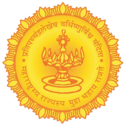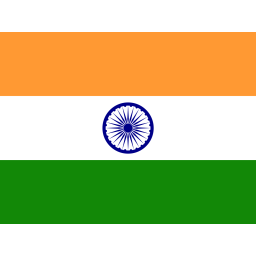Raj Bhavan Mumbai
Introduction
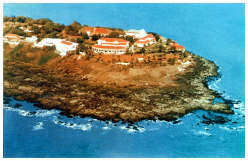
Ariel View of The Raj Bhavan, Mumbai
Mumbai Raj Bhavan is the official residence of the Governor of Maharashtra. It is one of the most beautiful buildings in Mumbai city.
It is situated on about 44 acres of land and surrounded by sea on three sides. The Raj Bhavan complex at Malabar Hill has a mile-long stretch of thick forests, a sandy beach and several lush lawns. The most significant fact about Mumbai Raj Bhavan is that it breathes a century and a half of history.
The Mumbai Raj Bhavan has a precious collection of beautiful carpets, paintings, exquisitely carved doors and elegant French-style chairs and sofas with intricate portraits on them.
Visitors to the Raj Bhavan have often been curious to know about the buildings’ history and some of the items kept here. This section will prove to be valuable for lovers of art and history.
The Tides of Time
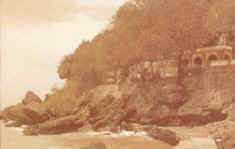
The Tides of Time Sheltered by a cliff, and enshrined by the sea, is an ancient temple at Raj Bhavan. The idols gaze beyond the curve of the harbour into the infinite horizons of history. They have watched the tides of time write scriptures the sands.
Primordial power on the islands, these idols were worshipped by the earliest inhabitants of Mumbai, the Kolis (fisher people). In the ebb and flow of the coming centuries, the temple saw invaders wash upon the shores. The Portuguese landed, swept into the hinterland and established new centres of power. The English arrived, lured by prospects of trade. The Portuguese receded from Mumbai and moved south.
The English remained, sowing their foreign government in the native soil. They commenced their reign from Bombay Castle, the city centre. Political currents would transfer Government House in a series of moves to Malabar Point, where the waves continued to beat upon the temple sands.
Meanwhile, the inexorable for freedom engulfed the nation. On the 15th of August 1947, the triumphant strike the of midnight hour sounded in an independent nation at Government House
A new India was born. Government House was renamed Raj Bhavan. The Indian tricolour was unfurled to fly proudly in the cusp of an ancient divinity and a modern democracy.
The idols watched the sun setting on the sails of the British Empire as their fleet faded into the horizon. The Indian Governors invited the Kolis to renew their rites.
The Kolis returned with ritual offerings of flowers and incense, to invoke the gods. They consecrated the idols with milk and ghee. In reverence, they bowed before the silent shrine that continues to chronicle the destiny of Mumbai, a child of the sea.
Winds of Change
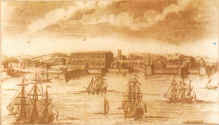
The Portuguese (in 1534) dropped anchor in the bay of Bom Baim. They lived on the island, fanned by the sultry tropical breeze until trade winds blew in an Anglo-Dutch force in 1626. The forces of England and Holland, could not wrest control from the Portuguese. They left the island hungry for a piece of the spice trade. The English decided to forego combat in order to conquer this destiny. Place intrigues and matrimonial politics would tie the fortunes of spice.
In 1661, a royal wedding was announced. King Charles II would marry Catherine of Braganza, the sister of the King of Portugal. The twist in the knot was that she would bring with her as dowry, the island of Bom Baim.
The English Governor, Sir Abraham Shipman sailed for Bom Baim to transfer the islands to the crown. The residing Portuguese Governor wilfully delayed the transfer till 1665. Shipman died in the line of duty before he was able to execute his command. The mission was passed on to Humphrey Cooke.
In 1665, Cooke ceremoniously took possession of Bombaie by taking earth and stone in his hands. The Instrument of Possession was signed in the Manor House, anchoring a jewel to the crown.
Bombay Castle
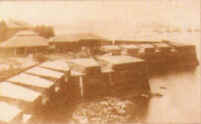
The English established themselves at The Manor House and bestowed upon it a new sovereign title, The Bombay Castle. This first Government House was situated in the heart of the Fort, behind the Town Hall and between the Mint and the Old Customs House.
Bombay Castle had a commanding view that strategically encompassed the port, its two bays and the Town. In the words of an ensign, Bombay Castle was, the strongest hold our makers are master of, in India.
Historian James Douglas evokes the powerful impression of Bombay Castle, you pass under a lofty gate. Two figures look upon you, Portuguese soldiers bearing aloft the great globe itself, a significant emblem of an inflated dominion by sea and land.
King Charles II was in perennial need of funds. He leased the islands to the East India Company in exchange for a loan and a yearly rent of ten pounds in 1668. Sir George Oxinden was the first Governor appointed by the East India Company.
By 1686, the East India Company shifted its headquarters from Surat to Bombay. By 1710 the Castle had been provided with a strong magazine, quarters for soldiers and tanks to supply fresh water for a thousand people for twenty months.
Later, this move that had initiated fortifications, prompted another shift. It was deemed strategically inappropriate for the Governor to live within the bulwarks. For, all those who visited him would be able to assess the strength and preparedness of the garrison. The search began for a new residence.
New House
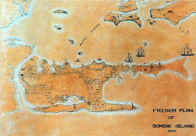
Mr John Spencer’s home in Apollo Street was purchased in 1757, it would be the new residence of the Governor. It was aptly titled New House and subsequently Company House.
The Governor did not reside here for long. Bombay had begun to grow and the heart of the city was becoming congested. Governors had begun to prefer the climes at the occasional hot weather residence at Parel.
Sans Pareil
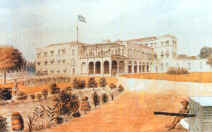
Once a Jesuit monastery, the magnificent mansion at Parel was built on the ruins of the old Vaijanath Temple. A traveller, Carsten Neibur had suggested the villa at Parel be called Sans Pareil (The Peerless) since nothing could compare with it in all of India.
Mr. W. Hornby (1771-1784) was the first Governor to take up residence at Parel. Melody and mellifluous voices filled the Durbar Hall. During these gala evenings, china and crystal would glitter under the chandeliers in the banquet hall. In 1804, diners raised their glasses at a banquet hosted by Gov. Jonathan Duncan to toast the launch of The Literary Society of Bombay.
Meanwhile, in Parel, industrialisation was asserting its noxious effect. The population had burgeoned. Pollutants fouled the air, creating conditions favoured by wind and water-borne diseases.
Governor Richard Temple transferred his residence to Malabar Point. In 1883 Lady Fergusson, wife of the Governor died of cholera in the Parel House. Following her death, Government House officially shifted to Malabar Point.
The Parel Residence was converted into a plague hospital where thousands received treatment for the plague that struck Bombay in 1897-98.
Dr Waldemar Haffkine entered the portals and developed the Plague and Cholera vaccines. Since 1925, this Government House is now known as The Haffkine Institute, in memory of the man who transformed a fortress into a citadel of science.
Raj Bhavan
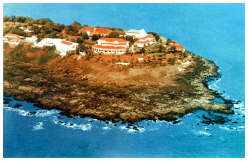
Prices Memorial, records that Malabar Point was the occasional retreat of Governor Medows (1788-1790). Sir Evan Nepean (1812-1819) lived here in a small room. In 1880, Sir Richard Temple initiated the formal transfer from Parel. The early residence and office was known as Marine Villa. From this aesthetic bud, Raj Bhavan would bloom into a community of estates, adorning 23 acres of land, laced by beach and forest.
Jal Bhushan
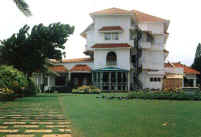
Jal Bhushan stands on the foundation of a pretty cottage where Governor Monstuart Elphinstone had lived. Heber describes it as, a pretty cottage on a rocky and woody promontory actually washed by sea spray. A winding road built by Lord Elphinstone leads to the commanding citadel, Jal Bhushan, the office and Residence of the Governor.
French furniture imported by Montstuart Elphinstone is placed in the stately office of the Governor. Artists have endowed exquisite carpentry with rare artistry, painting intricate portraits and tableaux on the wood. With the deft stroke of a brush, they have brought alive the delicacy of lace and the sheen of pearls.
In the grand residence and office, treasures of Indian Art also find their niches. Paintings by Indian Masters attend within Jal Bhushan.
Jal Chintan
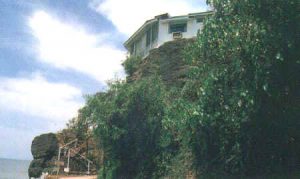
Perched upon a cliff that leads to the sea, plinth claws into the precipice. On this foundation stands Jal Chintan, once known as Point Bungalow. The official residence for the visiting Prime Minister of India. Unofficially, Panditji’s (Pandit Jawaharlal Nehru), favoured abode
Panditji and other Prime Ministers must have stood on the balcony, contemplating a lone light in the looming sea. The sole probe piercing the dark was Prongs Lighthouse, a beam radiating as far as thirty-five miles. For mariners, the rays of this beacon meant they had arrived in the bay of Bombay.
From the balcony, you can still watch the foaming waves crash upon the dark rocks. Hours fly, as the fierce and rugged cliff battles the surging seas.
Jal Lakshan
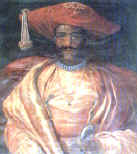
The residence is reserved for the visit of the President of India. At Jal Lakshan one presence is permanently in attendance. The collection of portraits of Maratha chieftains. A theory proposes, that Sir Battle Frere commissioned Theodore Jensen to paint this series after the Mutiny of 1857. With his brushes and oils, Jensen actualised the proud bearing and mien of chieftain
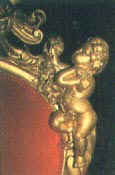
The paintings were brought to the Government House. This artistic effort was also prompted by political expediency. Frere had hoped this tribute would placate the leaders and persuade them to accept British suzerainty Jal Lakshan chair details
Jal Lakshan awaits another presence, the visit of the President. In environs befitting his stature, the President invites visitors to the grand receiving rooms. The guests are ushered in and they join the President, seating themselves on the carved furniture gilded with gold.
The Presidential Suite also houses a valuable collection of Mughal Miniatures
Jal Vihar
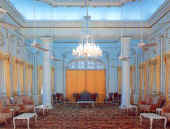
The Banquet Hall is now called the Jal Vihar. Carved screens, designed by poetic craftsmen separate the dining area from the reception hall.
The vaulted ceilings of both halls are crowned by moulding of the Ashoka Lions of India. The floors are laid with priceless Persian carpets inlaid with ancient motifs that evoke the Mughal era.
The Governor hosts banquets here for dignitaries and visiting Heads of State. Sterling occasions when the silver salvers reflect the luminescence of the tiered chandeliers. With each artistic leitmotif echoing another, Jal Vihar creates for guests an impressive dining experience.
Jal Sabhagraha

Jal Sabhagraha, the tranquil and serene Durbar Hall of the Raj Bhavan. The first light of the rising sun shines through the French windows aligning the horizon.
Jal Sabhagraha is the venue for momentous occasions like, Swearing in Ceremonies. This august hall is also used by the Governor to felicitate litterateurs and artists.
Heritage Bequeathed
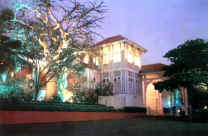
The estates of Raj Bhavan undulate from shore to land. Witnessed by the firmament forest, cliff, sea and sand assert themselves over forty-nine acres. Witnessed by man Raj Bhavan is an expression of history, the proud heritage of Maharashtra and India.
Underground British Era Bunker
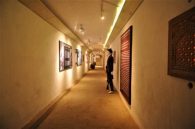
An underground British-era bunker was discovered at Raj Bhavan, Mumbai in the year 2016.
The British – era bunker was built sometime before the First World War when Raj Bhavan served as the ‘Government House’ of the Bombay Presidency.
The 150-meter long, underground British Era bunker, which had remained closed for nearly six decades was discovered by then Governor CH. Vidyasagar Rao on 16th August 2016.
The bunker when opened had various rooms bearing names such as Shell Store, Gun hell, Cartridge Store, Shell Lift, Pump, Central Artillery Store, Workshop, etc. The Bunker opened with a 20-ft tall gate resembling a fort and has a ramp on its west end, just opposite the Darbar Hall. It has long passages and 13 small to medium size rooms. It is a unique piece of architecture, unlikely to be created anywhere in India. The structural audit of the bunker was carried out by the IIT Bombay. Thereafter the work of structural strengthening of the bunker was done. The strengthening work included waterproofing, electrification, air-conditioning and allied works.
Gallery of Indian Revolutionaries
The British-era bunker at Raj Bhavan has been reincarnated as a Gallery of Indian Revolutionaries from Maharashtra and rest of the country. The Prime Minister of India Shri Narendra Modi inaugurated ‘Kranti Gatha‘ the gallery of Indian Revolutionaries on 14th June 2022.
The gallery has various murals, busts and paintings of known and unsung Revolutionaries. It was curated under the guidance of historian and writer Dr Vikram Sampath.
The Gallery commemorates the several revolutionaries of Maharashtra, right from the First War of Indian Independence in 1857 to the Naval Mutiny in Mumbai in 1946. It pays tributes to the several Bravehearts from the State who sacrificed their everything for the cause of the freedom of their motherland. They include Vasudev Balwant Phadke, Chapekar Bandhu, Bal Gangadhar Tilak, Vinayak Damodar Savarkar, Babarao Savarkar, Anant Laxman Kanhere, Madame Bhikaji Cama, the first organized secret society of India- the Abhinav Bharat, Ganesh Vishnu Pingle, Vasudev Balwant Gogate, Shivram Rajguru and several others.
The gallery takes the visitors through a time-travel of this entire story of the armed struggle against British rule in Maharashtra (then Bombay Presidency) through exhibits, sculptures and rare archival photographs. The gallery also recreates the scene of the coronation of the perennial inspiration for all revolutionaries— Chhatrapati Shivaji Maharaj.
The Gallery of Revolutionaries was dedicated to the people by the Honorable Prime Minister in the year when India is celebrating the Azadi Ka Amrit Mahotsav.

